Postoperative scars usually form within 3 to 4 weeks. The formation of the final scar is quite a lengthy process and can take several months. Immediately after removing the threads, the scar should be moistened with unscented creams, as the scar tissue does not provide sufficient moisture. In addition, special scar massages should be carried out in order to maintain the elasticity of the scar and the skin surrounding it. This is an important point when preparing for fitting a prosthesis.
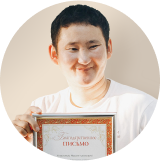
- Done with the knee'. What is the future of limb prosthetics in Russia?
- How dependent are prostheses on imports?
- HOW TO RECEIVE A PROSTHESIS AFTER AMPUTATION
- Preparation for prosthetics
- reduction in edema
- position of the stump
- Types of tibial prostheses
- Modular tibial prostheses
- The most popular arm and leg prostheses
- How much do arm and leg prostheses cost?
- Zimmer hip prosthesis
- cost of hip prostheses
- Basic requirements for knee joint arthroplasty
- What should be considered when choosing an implant?
- Rehabilitation for knee endoprostheses
- Quota knee arthroplasty
- functions of the prosthesis.
- How does the fitting with a leg prosthesis above the knee work?
- What makes this clinic so unique?
Done with the knee'. What is the future of limb prosthetics in Russia?
All major cities have Prosthetic Orthopedic Companies (PROPs) under the Ministry of Labor and Social Protection of the Russian Federation. There are also private companies. Both work according to the same system and according to the same standards. Individuals who have lost a limb receive prostheses from the state through the Social Insurance Fund, a benefit that is free under Federal Law 181-FZ. Military personnel with amputee injuries have also received individual prostheses at government expense since 2008, but their rehabilitation is overseen by the Defense Department's military hospitals.
The cost of the same type of prosthesis can vary significantly from city to city. This depends on public procurement, where the cheapest, if not always the most technologically advanced, bid wins. The funds made available by the regions also vary. The budget for prostheses for people with disabilities is increasing every year. In 2018 it amounted to 27 billion rubles, by 2020 it increased to 33 billion, and this year 37 billion will be allocated.
It is not possible to choose the rehabilitation device yourself - the Social Insurance Fund will pay for such a prosthesis as recommended in the program.
Depending on the individual rehabilitation program that a person receives after the recognition of a disability, the committee decides whether a cosmetic or a bionic prosthesis is needed and, if it is a bionic prosthesis, how advanced it will be. However, you cannot choose a rehabilitation device at your own discretion – the program will pay for the program-recommended prosthesis. If you have individual requests, you can pay for them at your own expense, but the cost is not insignificant.
A cosmetic prosthesis is the simplest type; it looks like an arm or a leg but cannot be moved. It usually consists of a stump cover (stump shell) to which attachments are attached. The prosthetic leg looks similar: a plastic sleeve is pulled over the atrophied limb, to which a knee joint, a metal tube and an elastic foot are attached. The tube is wrapped with foam rubber to add volume to the artificial leg and a stocking is put on. Cosmetic prostheses have been manufactured since the early 20th century and are still most commonly used in rehabilitation. They are practical, but they don't look aesthetic, which is why you don't see them on the street - people try to hide them under their clothes. The cost of a cosmetic arm prosthesis is about 30-50 thousand rubles, while the cost of a leg prosthesis is about 100-120 thousand rubles.
How dependent are prostheses on imports?
In Russia, almost all types of prostheses are made using imported equipment. Timur Sayfutdinov, founder and CEO of MaxBionic, says that even the production of 'semi-finished products' is heavily dependent on foreign components. – Fragments of prostheses, which in the future will be individually fitted to a person, is highly dependent on foreign components. 'For the production of bionic hand prostheses we buy micromotors and electronics from abroad. They are now difficult to obtain, the waiting list is six to 12 months. I need to pay 100% deposit and then wait about another year. As a result, there are huge queues for prostheses and production can no longer keep up.
Indigenous equipment and materials are also used, but mainly for simple, cosmetic prosthetic hands. Local materials are also partially used for leg prostheses, but there is a nuance here. According to statistics cited by experts interviewed by AIDS.CENTER, the most common leg amputation is above the knee, with the knee module being the main component of the prosthesis. Imported 'knees' are mainly used for leg prostheses. There are also Russian products, but they are inferior to foreign products in terms of their characteristics (portability, durability, ease of use). When given a choice as to which manufacturer to hire to produce prostheses, a person chooses foreign companies.
Linings, stylish prosthesis covers, are also dependent on imports. Even functional and expensive prostheses have the disadvantage that they are repulsive. A prosthesis wearer is uncomfortable in short-sleeved dresses or shorts, at the gym, or at the beach. Contoured polymer overlays are used for embellishment, which can be printed with a 3D printer. As far as production is concerned, it is not a particularly scientifically demanding product, but this is also bought abroad.

HOW TO RECEIVE A PROSTHESIS AFTER AMPUTATION
- 1 Register with us for a consultation and examination. After the consultation, you will receive a document - a file of the medical-technical commission (MTC). The MTC deed describes the technical rehabilitation measures (RTGs) you need and which are provided by the state – Order No. 888n of the Ministry of Labor of Russia of 2018.
- 2 Go to your local polyclinic to get a referral for a Medical and Social Assessment (MSE). Transfer form: 088u-06, valid for 1 month from the date of registration.
Ensure that the following technical rehabilitation tools (RTI) have been included in the technical rehabilitation section of the IPRA (for prosthetics):
Preparation for prosthetics
Rehabilitation and preparation for prosthetic care should begin once the scars have healed. The residual limb must be prepared for walking with the prosthesis.
Caring for the residual limb, eliminating swelling, eliminating contractures, restoring sensitivity, restoring the functioning of all body systems, preparing the patient's muscles for early verticalization - all this must be started on time and carried out correctly. This significantly shortens recovery time and ensures successful early prosthetic rehabilitation.
reduction in edema
The swelling of the residual limb after an amputation is a normal reaction of the body to the operation.
It usually resolves itself within a few weeks. Moderate residual limb bandaging and residual limb positioning in relation to the trunk can speed the reduction of swelling. The dressing must be applied correctly and the patient must be trained in applying hospital dressings. Incorrect bandaging can lead to damage. Bandaging should be done as instructed and under medical supervision. The hospital will also advise on the correct position of the residual limb.
position of the stump
During your hospital stay, the exercises should be adapted to your overall situation. Movement therapy is used to maintain muscle tone and joint mobility. A comfortable and pain-free residual limb position is not always appropriate.
Do not keep the residual limb in a flexed position for long periods of time. It is important that the hip joint does not develop contractures. For example, for transfemoral amputations, it is recommended to lie on your stomach for 30 minutes two to three times a day. The head should be turned to the opposite side of the amputation. This position stretches the hip flexors and maintains range of motion in the joint. It is recommended to sleep on a firm mattress as this prevents pelvic flexion in the supine position.
A wheelchair may be required initially after the amputation. It is important that the seat of the chair is rigid. This also prevents excessive flexion of the residual limb and deformity of the spine.
Types of tibial prostheses
- Therapeutic tibial prostheses – for primary prosthetics. For shaping the residual limb and getting used to wearing a prosthesis.
- Non-modular prostheses - with limited function, suitable for elderly patients or people with an inactive lifestyle.
- Modular or endoskeletal - restore function to lost limb. They consist of a residual limb, connecting elements and an artificial foot.
- Floating - for procedures in water. Manufactured from corrosion resistant alloy with holes for water drainage. The foot is made of non-slip material.
- Bionic - a microprocessor ensures that the movements are as natural as possible.
The specialists at the Salud Orthopedics and Prosthetics Center select the prosthesis based on individual needs: age, weight, condition of the residual limb, type of amputation.
In the case of leg prostheses at hip level (hip prosthesis), the specialists at Salut Ortho propose the selection of the desired knee module, foot, socket variant and type of attachment.
When choosing accessories, they take into account the doctor's recommendations and the individual characteristics of the patient (height, weight, age), as well as his physical and social activities.
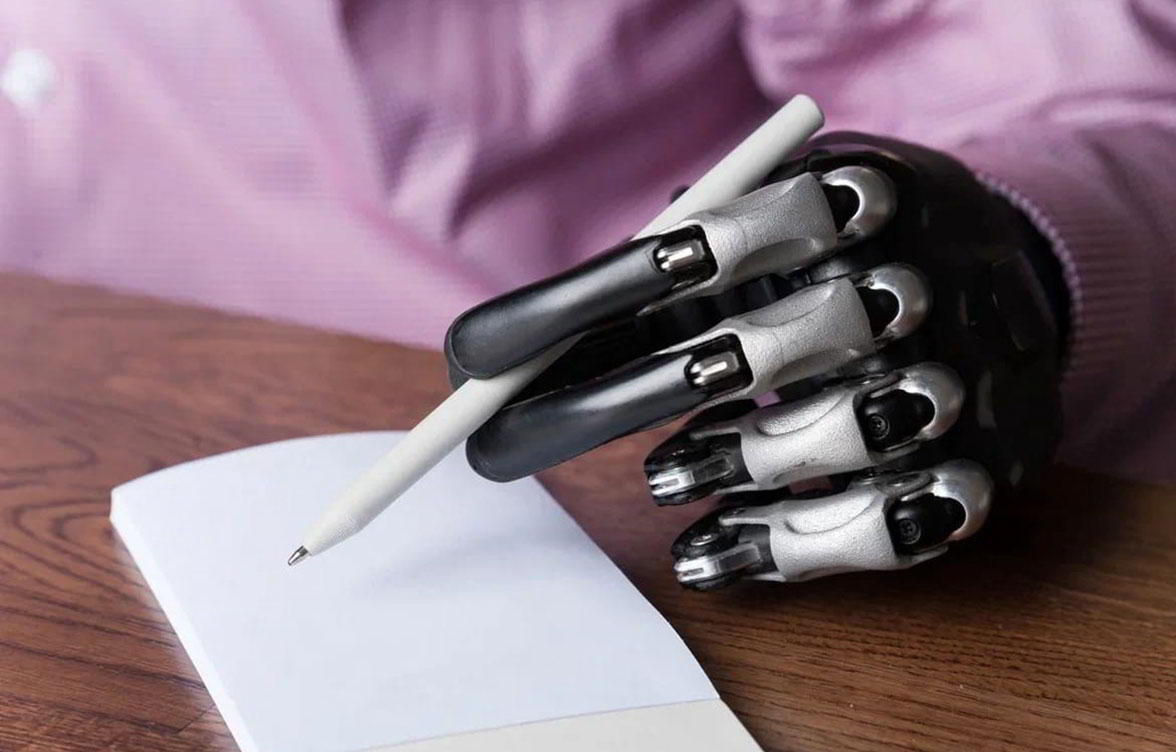
If the rhythm of life has changed and the old prosthesis can no longer cope with the load, it is worth thinking about a replacement. The functionality and comfort of the knee or foot module can be assessed during a test drive. Replacement covers and high quality silicone inserts are readily available.
Modular tibial prostheses
The most common type. They are comfortable and safe. Additional connections can be made to expand functionality. All components are selected by our specialists according to the patient's anatomical conditions.
- blunt shaft. Before the acetabulum is made, an impression of the residual limb is taken. The more precisely the acetabulum is made, the more comfortable it is for the patient;
- Helium or silicone jacket. To protect the residual limb in the prosthesis, reduce stress and prevent skin damage and scarring;
- function module. This is the main part that connects the upper to the foot. A smooth and natural gait depends on this module;
- Foot. The supporting component of the prosthesis. It is selected according to the degree of mobility. Available in articulated, hydraulic ankle splint and split toe;
Definition of the prosthesis variants
Description of the most important parameters of the contract prosthesis
Adjusting and finishing the prosthesis
Submission of documents to social security
The most popular arm and leg prostheses
Modern bionic prostheses have different designs and functional principles depending on the model. There are variants that move via the activity of the other muscles. More advanced models are equipped with sensors that respond to nerve impulses - they can even emulate the fine motor skills of the hands. There are also prosthetics that look like something straight out of a sci-fi movie, as they literally read people's minds. There should be more such models in the future, because the company Neuralink, founded by Ilon Musk, is developing an interface that creates a direct connection between the human brain and a computer. It has already achieved great success in this area.
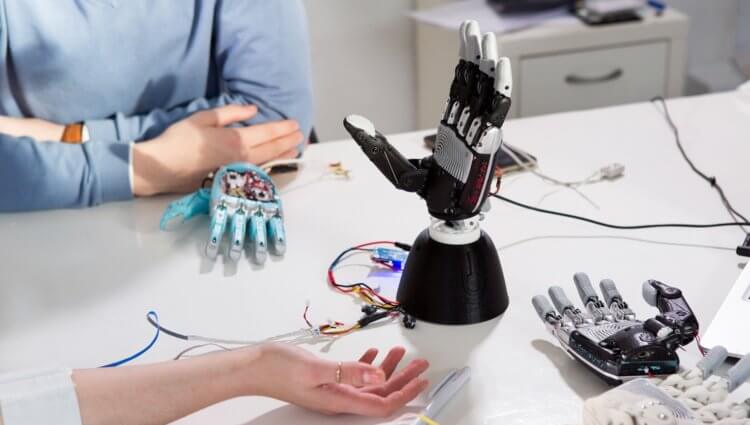
In the future, bionic prostheses can be controlled by the power of thought
The world's first commercially available prosthetic hand was developed by Touch Bionics in 2007. Dubbed the i-limb, it replaced a lost hand by attaching it with a special sleeve. With a weight of 25 kg (which was excellent for the time) and slender fingers, she could grasp all sorts of objects. The owners could eat with the cutlery, use a computer mouse and tie the laces of their shoes.
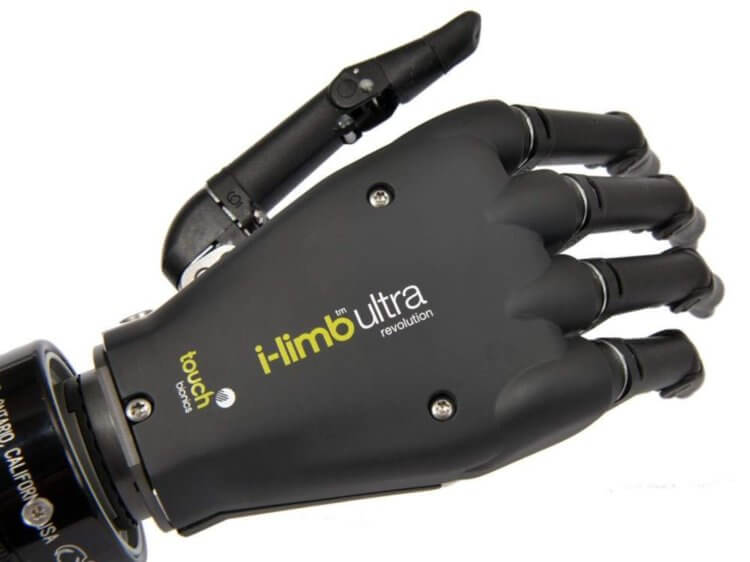
In 2016, Touch Bionics was acquired by Icelandic company Össur. The Spaniards also bought more than a dozen other prosthesis manufacturers, making them the industry leader. In 2019, Össur's capital is more than $450 million.

How much do arm and leg prostheses cost?
According to Frost & Sullivan, the cost of modern bionic prostheses ranges from $5,000 to $50,000. The price directly depends on the extensive list of features, speed of work, power, quality of materials and other parameters. Translated into our money, this means that bionic prostheses in Russia cost from 300,000 rubles.
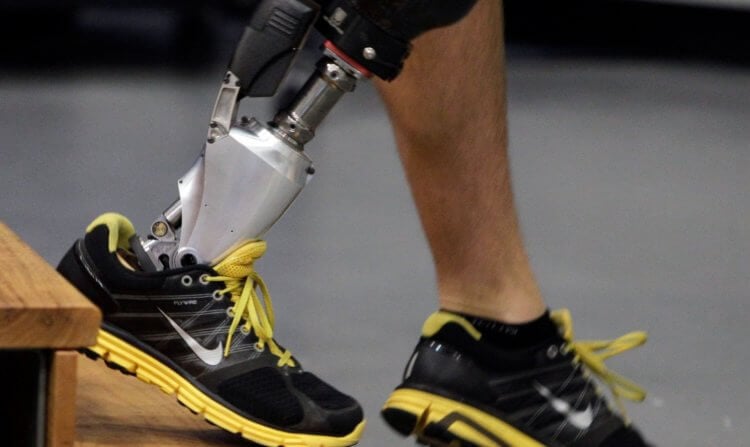
It is possible to get a bionic prosthesis for free in Russia due to a disability. To do this, you must go to the hospital where you live and have a medical and social report drawn up. The purpose of the medical examination is for the doctors to include the prosthesis in your individual rehabilitation program.
TESLA IS BECOME A ROBOT MANUFACTURER. HERE ARE THE DETAILS
Zimmer hip prosthesis
Can these prostheses be adjusted? The answer is yes, because the products go through a multi-stage test in the production facility and are then adapted to the patient. Patients who have had their hip replaced report the highest quality of life after several months of rehabilitation. Feedback shows that the lifespan of Zimmer prostheses is more than 15 years. Many patients cannot be interviewed because they die of natural causes due to their old age. Hardly any wear and tear is found in autopsy studies, even after years of use.
The key benefits of Zimmer endoprostheses can be summarized as follows.
- Price;
- large selection of models;
- Easy insertion;
- reliability of construction;
- long lifetime;
- low complication rate;
- wide distribution network.
How long does the prosthesis last in the patient? When used correctly, patients can exercise properly throughout their lives. More than 75 % people end their lives with a primary implant.
For Zimmer devices, the service life is specified in the instructions for use. How many years is the manufacturer's guarantee? At least eight years with full mobility. The prosthesis does not increase the patient's weight, since the weight of the product is precisely specified in the contract with the buyer. Depending on the version, its weight does not exceed 500 grams. Patients keep asking themselves: is it possible to run or actively engage in sports? In this case, however, the answer depends on the type of prosthesis. Active sports, including running, are possible with ceramic prostheses.
cost of hip prostheses
Zimmer prostheses are the most popular, and the range of models includes all the necessary prosthetic implants. Which implants from this company are the best? That depends on how the patient will use them. All versions are suitable for normal everyday life at low speeds. price in Moscow.
- Classic bipolar implant. Equipped with a metal-polyethylene friction couple. DURABILITY - A lifetime with moderate use. The amount requested by the manufacturer is usually less than 120,000 rubles.
- Titanium unipolar prosthesis. The cheapest option. Only the head of the femur is prosthetized, the acetabulum is preserved. The friction pairing cannot be selected, it always includes metal components. The starting price is from 75,000 rubles.
- Ceramic. The most expensive type. It has minimal friction and a wear gradient. The price starts from 200 thousand rubles.

Black ceramics, which are more expensive and durable than the usual pink or yellow ones.
In summary, the question of how much a design from Zimmer costs depends directly on the model. The price in Moscow starts from 75 thousand rubles.

Hello!!!
I am 67 years old. I have grade 3 coxarthrosis of the hip joint. My surgeon has decided that I can have a joint replacement operation.
But in my heritage prostate cancer stage 2, NK thrombophlebitis, stroke and still overweight :)!
And one more question: is the cost of the prosthesis included in the quota?
Thanks for that!!! Leave a comment on 12/11/2022 at 8:54 am
My husband had a hip replacement and now has joint pain in his other leg and needs surgery. Is it possible to insert a pond from another company, ie a cheaper one, within the quota? Leave a comment on 10/10/2019 at 7:50 p.m
Basic requirements for knee joint arthroplasty
It should be noted that all existing endoprostheses meet the basic requirements and can be a complete replacement of the knee joint. It is logical that there cannot be any implants on the market that do not meet certain standards. However, there are prostheses that are made of better and more durable materials, while others are of inferior quality.
Basic requirements for a good endoprosthesis:
- biocompatibility. The implant materials must be hypoallergenic and must not cause rejection reactions.
- Compatibility with the anatomical conditions of the skeleton. The endoprosthesis must be appropriately sized and closely follow the natural curvature of the bone.
- The mechanical properties of the materials must correspond to the specific structures of the knee joint. The implant material must be strong and able to withstand high loads. The smooth surfaces of the prosthesis must allow easy gliding.
- Good functionality. A high-quality endoprosthesis must allow good flexion and extension movements without restricting the mobility of the knee.
- Form and function must be maintained over a long period of time. It must not wear out or deform over the years.
- High resistance to wear and tear. The guarantee period for modern prostheses is 15-20 years. There are many known cases where the implant has 'worked' 5-10 years longer than the prescribed time.
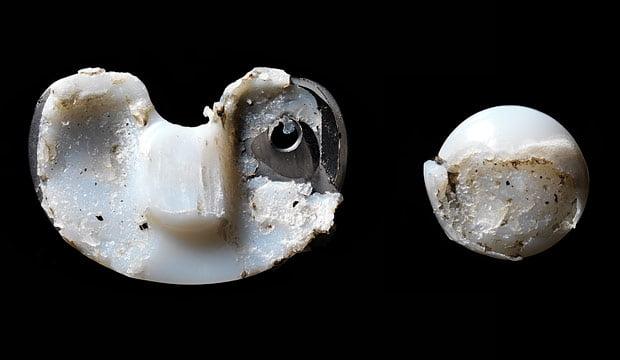
Critical wear of the plastic platform of the knee implant.
It should be noted that the proper functioning of the prosthesis requires not only high quality, but also a good fit. If the surgeon misaligns the implant components during surgery, the joint will not function properly. The quality of the fit also determines the longevity of the prosthesis.
What should be considered when choosing an implant?
When choosing an endoprosthesis, the doctor primarily pays attention to the design and method of attachment. The successful fit of the endoprosthesis depends on these two characteristics. At the same time, inserting the wrong implant can lead to unsatisfactory surgical results and unwanted complications.
It should be noted that most experienced doctors use prostheses from 2 to 3 manufacturers in their practice. In this way, the surgeon has a free choice and can familiarize himself with the properties of the individual models. So if your surgeon is working with a specific endoprosthesis, choose an option from this range. Don't force your surgeon to use an unfamiliar model.
Table 1: Basic principles of prosthesis selection.
Cemented prostheses are more commonly implanted in elderly patients with systemic osteoporosis.
Cementless implants are recommended for younger patients and those with normal bone density and a narrow femoral canal.
For older and inactive patients, experts recommend a fixed prosthesis. A removable denture requires more soft tissue and ligament support. It is therefore preferred in younger and more active patients.
The movable bearing option is also more suitable for overweight patients.
Rehabilitation for knee endoprostheses
Symptoms still occur in the first 3 to 4 days after the operation. To maintain the patient's well-being and prevent postoperative complications, drugs are used to relieve pain. With a partial knee prosthesis, the rehabilitation time is shorter. The patient can walk almost immediately without a cane or walker.
To avoid early postoperative complications, the doctor usually gives a number of recommendations:
- taking anticoagulants, antibiotics, painkillers, calcium and vitamin D supplements, bisphosphonates;
- use of compression knitwear,
- physical therapy and physiotherapy;
Use of a walker or crutches. The patient must use a walker or crutches for at least 6 weeks and must be active from day one. A one-stage double knee replacement can extend crutch use up to 3 months. Also, indications for prolonged use of an additional support can be the high body weight of the patient and the occurrence of a number of complications. If necessary, a special cane can be used in the transition phase after giving up the crutches.

Exercise as part of the rehabilitation program after knee replacement should be performed slowly and in a relaxed manner. During a period of 3 months, the help of a rehabilitation therapist is required to ensure proper rehabilitation.
Sometimes patients need the help of a psychologist - for fear of walking independently - to perform the necessary exercises.
Women undergoing arthroplasty are advised to conceive no earlier than six months to a year after surgery.
Quota knee arthroplasty
In the case of quota knee arthroplasty, the operation can be carried out in whole or in part at state expense. The patient must have an indication for total knee arthroplasty as defined in the current Advanced Medical Assistance Program list. Together with the attending physician, all the necessary information is collected, the patient is examined in the polyclinic, and after all the necessary documents are collected, the application is sent to the provincial commission. The decision to approve the application for quota surgery is made by the approved clinic.
Knee arthroplasty is now performed in almost all major cities in Russia. The cost of a knee replacement can vary significantly from one medical center to another; the average price in Moscow is 138,900 rubles. There are also renowned traumatology and orthopedics clinics in St. Petersburg, Novosibirsk, Nizhny Novgorod, Barnaul, Smolensk, Orenburg and Surgut. The RR Vreden Russian Research Institute of Traumatology and Orthopedics enjoys a good reputation in the field of knee arthroplasty. Prices for an operation in the St. Petersburg center range from 30,800 for a one-piece endoprosthesis to 53,900 for a revision operation. In other regions, the cost of prosthetics will be slightly lower. Am Ya.L. At the Tsivyan Research Institute of Traumatology and Orthopedics (Novosibirsk), for example, an initial operation costs RUB 18,200 and a re-endoprosthesis RUB 35,000. The total cost of treatment depends on the price of the knee replacement, the complexity of the condition, the hospital environment, and the postoperative period.
[1] Inoue R. Medical problems and risk factors for metabolic syndrome among patients with radiographic knee osteoarthritis in the Japanese general population//Journal of Orthop. Science. – 2011 – Vol. 16. – pp. 704-709.

Lower limb prosthesis designs are selected individually based on the degree of mutilation, but the basic components are common to all models. The most important part is the residual limb socket, which is made according to the patient's measurements and impressions. It consists of polymer composites and high-strength metal pillars. It is fitted with a silicone or helium sleeve that performs multiple tasks. These are:
- even load distribution;
- cushioning of shock loads;
- Reducing pressure around bony prominences and tender areas;
- Compensation for unevenness on the residual limb;
- Improved fixation security through better adhesion to the skin.
Other components vary depending on the type of prosthesis and the location where it is placed: tibia, thigh, or after a total hip removal. In lower limb prosthetics, modular and non-modular constructions of various types are used:
- Therapeutic prostheses and training prostheses. A type of primary lower limb prosthetics performed in the early stages of rehabilitation. The aim is to shape the residual limb, prevent loss of motor function and speed up the person's socialization. The effect is achieved by frequently changing the cuffs (2-3 times a month), which reduces swelling and strengthens muscle mass. The cuffs are made of transparent plastic so that the condition of the skin can be monitored;
- modular. This type of prosthesis almost completely restores the movements of the lower limbs thanks to the adjustment of the torsion type and the adjustable ankle. With it, it is possible to lead a normal life and play sports, since even the gait symmetry is restored;
- non-modular. Limited in function and mainly for aesthetic reasons. They are more often prescribed to older people and people with sedentary lifestyles;
- Products for bathing and swimming. They are designed to make bathing and swimming easier. Thanks to their protective coating, they are resistant to corrosion. The accessories are easy to clean and dry;
- Robot designs with external power sources. The most advanced bionic variants designed for patients with high motor activity.
functions of the prosthesis.
Lower limb prostheses are of great importance in the rehabilitation and socialization of patients of all ages. If the prosthesis is fitted within the first 30-60 days of residual limb loss, up to 95 % patients are able to regain mobility and work. Delayed prosthesis fitting leads to disease and loss of residual limb sensitivity, gait, negative psychological attitude associated with addiction and the development of depression, and reduced life expectancy.
Limb prostheses offer stability when standing and walking, compensate for aesthetic defects and enable life without restrictions.
Prosthetic limb benefits at our New Life Centre:
The first consultation in our company for prosthetics and orthopedics is free of charge.
How does the fitting with a leg prosthesis above the knee work?

- Amputation of the leg and surgical formation of a stump suitable for the prosthesis;
- treating the residual limb, promoting scar healing, preventing swelling, infection and pain;
- Installation of a trial prosthesis, with which the patient learns to walk, gets used to unfamiliar sensations and adapts to movements;
- Selection and fitting of a fixed prosthesis that suits the patient's lifestyle and activities. Carried out by an experienced prosthetist.
German clinics have always been known for their professionalism. The specialist clinic in Osterhofen offers prosthetic fitting service .
What makes this clinic so unique?
The Fachklinik Osterhofen combines professionalism and care for the patient and his environment. It is characterized by :
- the high level of training and experience of the medical staff;
- internationally recognized specialists in the field of prosthetics;
- the use of the latest technology;
- a long list of services that make patients' stay in the clinic more comfortable: cafeteria, gym, laundry, beauty salon, safe, swimming pool;
- interpreting services for international patients;
- affordable prices for medical care and other clinic services.
Osterhofen can help you regain your ability to work and enjoy everyday life, because the clinic's specialists do everything to eliminate and prevent the difficulties associated with this disease.
Read more:- prosthetic leg.
- Modern leg prostheses.
- The reamputation is.
- prosthetic legs.
- prosthetic leg where.
- cost of the prosthetic leg.
- Limb prostheses are.
- Life after a leg amputation.
